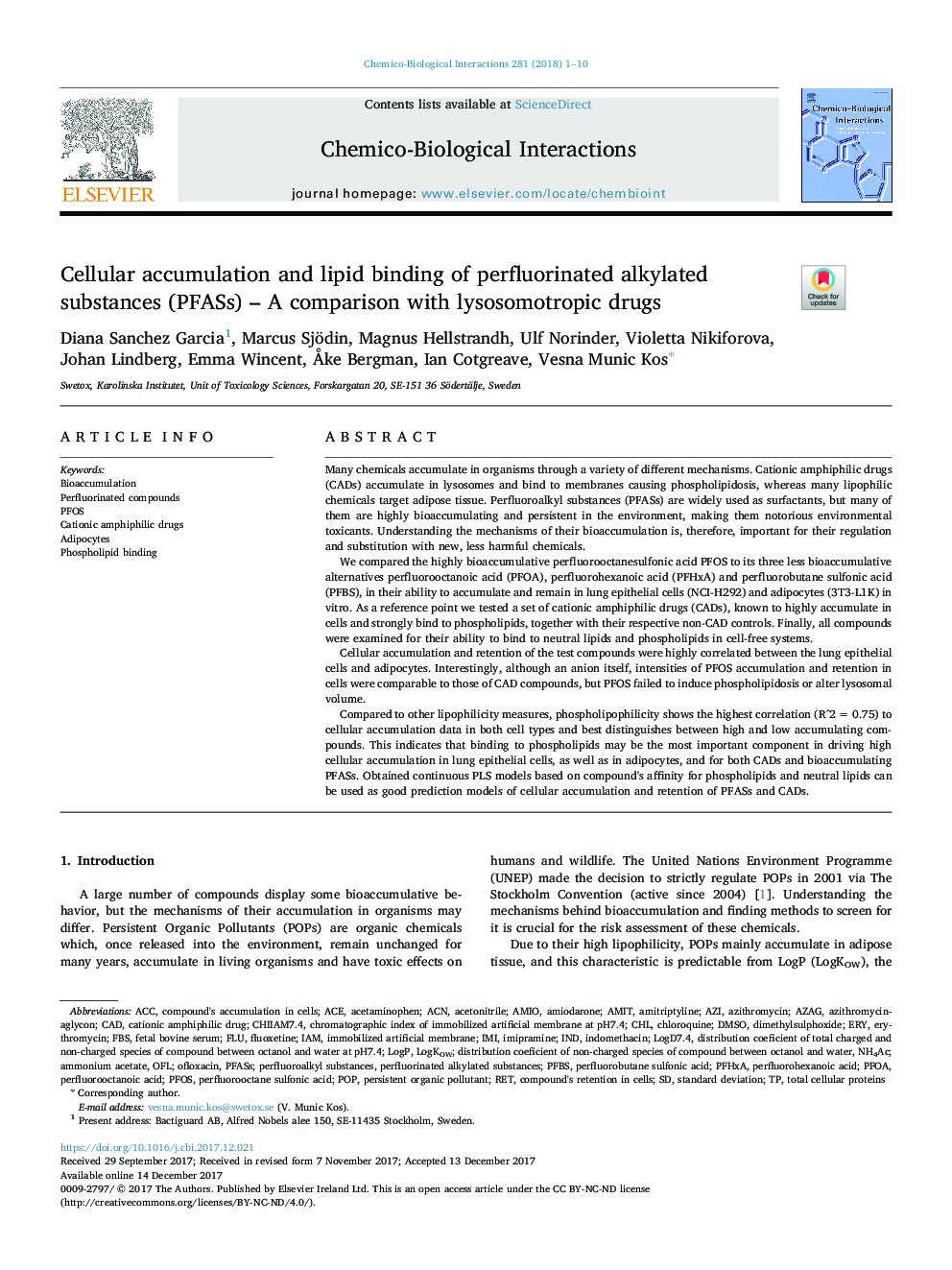| Article ID | Journal | Published Year | Pages | File Type |
|---|---|---|---|---|
| 8545129 | Chemico-Biological Interactions | 2018 | 10 Pages |
Abstract
Compared to other lipophilicity measures, phospholipophilicity shows the highest correlation (RË2â¯=â¯0.75) to cellular accumulation data in both cell types and best distinguishes between high and low accumulating compounds. This indicates that binding to phospholipids may be the most important component in driving high cellular accumulation in lung epithelial cells, as well as in adipocytes, and for both CADs and bioaccumulating PFASs. Obtained continuous PLS models based on compound's affinity for phospholipids and neutral lipids can be used as good prediction models of cellular accumulation and retention of PFASs and CADs.
Keywords
ACCperfluorohexanoic acidlogKOWPerfluorinated alkylated substancesAMIOlogPIMIPFHxAPFBSPFASsNH4AcChlACEACNFBSPFOAPFOSDMSOAdipocytesAzithromycinPersistent organic pollutantAmitriptylineAmiodaronePhospholipid bindingEryErythromycinAmmonium acetateAcetaminophenAcetonitrilePerfluorooctane sulfonic acidOfloxacinazistandard deviationindIndomethacinImipraminePerfluorinated compoundsRETcationic amphiphilic drugscationic amphiphilic drugdimethylsulphoxideBioaccumulationFlufetal bovine serumCADImmobilized artificial membraneFluoxetineIAMPerfluoroalkyl substancesOFLpopPerfluorooctanoic acidChloroquine
Related Topics
Life Sciences
Environmental Science
Health, Toxicology and Mutagenesis
Authors
Diana Sanchez Garcia, Marcus Sjödin, Magnus Hellstrandh, Ulf Norinder, Violetta Nikiforova, Johan Lindberg, Emma Wincent, Ã
ke Bergman, Ian Cotgreave, Vesna Munic Kos,
